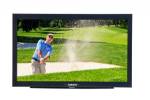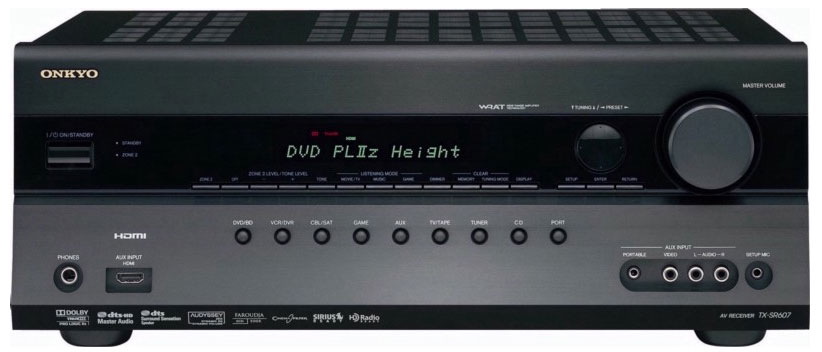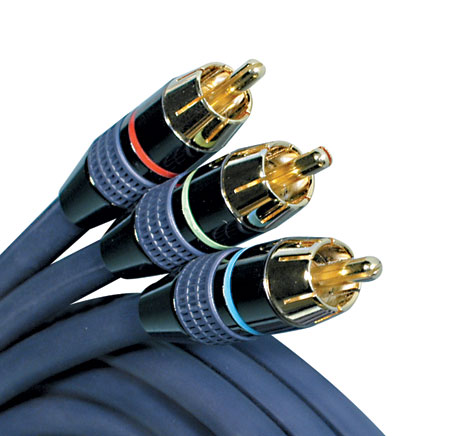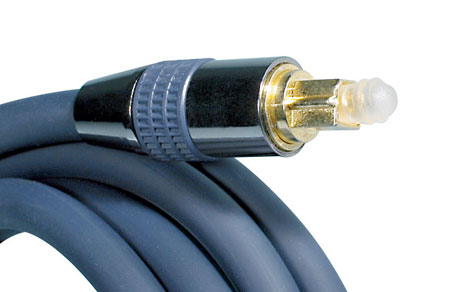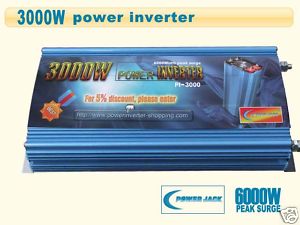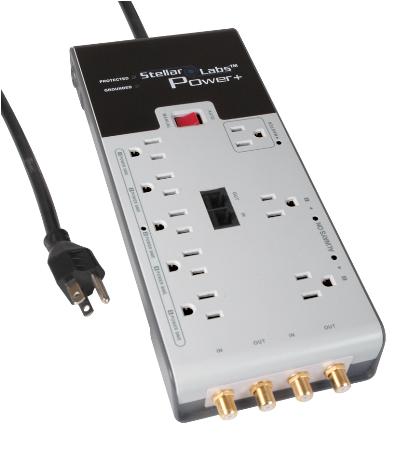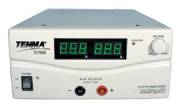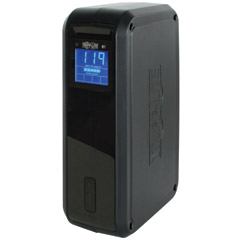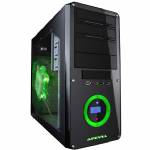The following is simple and BASIC information for those who need to replace drivers in their speaker systems and have little or no experience in loudspeaker design and selection. As there are volumes of text on the subject, this single page will not cover all bases needed for a FULL, in-depth understanding of all of the required background information in electronics, acoustics and other sciences involved.
General Guidelines For Driver Replacement
When there is need for replacing one driver in a speaker system, it is best to replace it AND the matching driver of the other cabinet to ensure uniform sound from left-to-right in that driver's range. This will affect the stereo "imaging" also. For example, replacing only the blown woofer in one of your speaker pair will probably result in a inconsistent sound in the woofer's response when you hear both loudspeakers at once.
Relative Loudness is very important for a flat frequency response of an entire speaker system. If, for example, the tweeter reproduces sound louder than the midrange or the woofer, the results could be unpleasant to the point of actually being painful! In this case the frequency response would be stronger in the high frequencies and not be flat and smooth. As a rule of thumb, it is best, in most cases, to choose replacement drivers whose loudness measures within a 3 decibel (dB) tolerance to the original speaker system's rated Sound Pressure Level (SPL). The reason is that 3dB is a noticeable difference ("notably louder" from the decibel explanation), where less than 3 dB isn't a big deal to most people. For example, if a speaker system has a rated SPL of 92, it would be best to choose replacement drivers with rated SPLs between 89 and 95. The exception to this would be in the case where a driver is perfect in all aspects for a given application, but has a louder SPL than recommended. If the resulting sound is not desirable, an attenuator or L-pad can be used to lower the driver's loudness to closer match the other drivers'. L-pads can be variable (like an individual "volume control" for just that driver) or "fixed" to lower the loudness a certain desired amount that can't be adjusted.
The loudness of the driver is measured in decibels (dB) and is often referred to as the Sound Pressure Level (SPL). This measurement is commonly made while the driver is fed 1 watt (1W) of power and measured from a standard distance of 1 meter (1m) from the front of the driver. For example, a common rating for a woofer will be shown as "SPL = 92 dB 1W/1m", meaning 92 decibels of loudness when powered with 1 watt of power... you get the idea.
The Decibel is the unit of measure for loudness. Through the magic of an ugly-looking formula based on logarithms and other nasties not to be discussed here, the decibel measurement comes out to twice as loud with an increase of 10 dB and half as loud with every decrease of 10 dB. A notable loudness difference, on the other hand, is perceived with a change of plus/minus 3 dB. So, a speaker with 92 dB SPL will, for the most part sound notably louder than a speaker with 89 dB SPL, of course both being fed the same sound with the same wattage input and all else being equal.
It is recommended that replacement drivers be of relatively the same construction and quality as the original drivers. Simply put, you don't replace the tweeters in a $5000 speaker system with drivers that cost $5 each and expect the sound quality to be the same. Also, you don't replace metallic tweeters, like titanium tweeters with silk dome tweeters and expect the same sound "color" in the higher frequencies. (This may be a desired effect in some cases. More information on this in the next section, or skip to the Woofer Replacement section, afterward.)
Driver Composition/Sound Color These are GENERAL guidelines to the different speaker compositions and their corresponding sound characteristics or sound "colors".
Paper drivers are what most people will refer to as "natural sounding", especially for woofers and midranges. This could be because the vast majority of speakers produced today use paper cone drivers and that is what most people hear most of the time, so that becomes "natural". Paper has a natural non-resonant characteristic that can attenuate higher frequencies, making paper tweeters uncommon. Beyond that, paper drivers can be of VERY good quality and be successfully used in most applications.
Polypropylene is a form of plastic, sometimes strengthened or made more rigid or heavy with additives like carbon fibers or talc. "Poly" drivers are used very extensively and effectively in today's autosound speakers because of their resistance to damage caused by moisture and temperature extremes. The characteristic dampened or "dead" quality of poly drivers is preferred in some applications where more resonant materials are not ideal. Also for this characteristic, poly can be ideal in tweeters for response that is "smooth" and not resonant or "peaky". It should be noted that many companies are using different additives, like talc and/or carbon fibers, etc., to change the strength, rigidity and sound characteristic of poly drivers
Metallic Composition, like titanium and aluminum, is becoming more common, mostly for their strength, rigidity, resistance to temperature extremes and lightness of mass. (Lighter substances move more readily and enable drivers to be more accurate in their transient response.) Rigidity of a driver's moving element (cone or dome) is important to the driver's dispersion. If the element physically distorts or "flexes" while it moves in and out, the sound coming from it no longer travels in straight lines from the element, but off to the sides in different, inconsistent angles. These characteristics can make metallic woofer and midrange cones more accurate and perform better. Another characteristic of metals is that they are more resonant than paper or plastic (you don't see a lot of paper or plastic bells around anywhere). For this reason, it is common for metallic tweeters to have higher frequency extension than other types and also have a "brighter" sound color.
Silk and Other Fabrics, as you might guess, are also very light and would be well suited for tweeters. They are often "treated" with coatings that seal the woven material from "leaking" the air they are supposed to move. Although less rigid, fabric tweeters are often very "smooth" and pleasing to the ear.
Woofer Replacement
Replacement of a Woofer Driver in a loudspeaker involves three major aspects: the original driver's frequency response and loudness, the volume of the speaker cabinet and the low crossover point.
A "flat" frequency response means that all frequencies are being transmitted at the same loudness. Typically, a woofer's function is to acoustically transmit the lower range of the the incoming audio signal, so, ideally, it should be able to reproduce low frequencies, all at the same relative loudness and taper off at its higher and lower extremes.
The lowest extreme would be that of the driver to be replaced, which should be shown in the system's documentation as the low end of the system's frequency response. For example, if the system's specifications show a frequency response of 45Hz to 25 kHz, then the replacement driver should reproduce bass down to about 45Hz in the original cabinet. (More on this in the next section) A "lower" low end may be desired for more bass response from the replacement driver.
The woofer relies heavily on the acoustic nature of its surrounding enclosure for proper resonance and best performance. Every woofer has a "comfort zone", as far as its enclosure size in concerned, in which lies the optimum size, where the speaker performs its very best. This comfort zone can vary from this optimum size by as much as 25% in some cases. Using port size (in ported cabinets), and internal damping, these differences can be lessened if not eliminated.
Enclosure Volume When you have removed the woofer to be replaced, a simple measurement of the internal height, width and depth should be made. Be sure to measure from internal wall to wall, easing dampening materials and other obstructions out of the way. Accurate measurement if these dimensions is important! (As most speaker driver listings show volume in cubic feet (cu.ft.), you will make these measurements in inches.) Apply these measurements to the following formula:
H x W x D = volume of the cabinet in cubic inches
then divide this volume in inches by 1728 (the number if cubic inches in a cubic foot)
Example:
A speaker that measures 20.5"H x 10.5"W x 8.0"D internally will result in an internal volume of 1722 cubic inches
1722 cu.in. ÷ 1728 cu. in. = .997 cu. ft. (effectively 1 cubic foot).
As noted before, the best choice of replacement driver will reproduce the same bass response as the original (down to 45Hz in the example above). Knowing this, the diameter of the original woofer and the volume of the cabinet,.
In the Speaker Selection Guide, the frame diameter of the replacement will be listed in the "size" column, the optimum cabinet size (that should be closely matched to the original cabinet) will be listed in the "Sealed" or "Vented" columns, and the desired low end (45Hz from the example) will be in the "F3" column. The closest match in all of these columns will be a very close replacement for the original.
The function of the crossover is to split the audio signal coming from your amplifier into separate parts to be used by the different drivers in your speaker system. In a three-way system the crossover splits the audio signal into three parts: the highs for the tweeter (often called the "high-pass" section of the crossover, passing only the high frequencies), the low for the woofer ("low-pass") and the middle frequencies for the midrange. The frequency where the crossover distinguishes between woofer and midrange or midrange and tweeter is called the crossover point. For example, a three-way loudspeaker system with a frequency response of 45Hz to 25 kHz may have crossover points at 500 Hz and 4 kHz. SIMPLY put, this means that the woofer reproduces from 45 to 500 Hz, the midrange, from 500 to 4000 Hz and the tweeter, from 4000 to 25000 Hz.
Another term often used in reference to crossovers is "6, 12, 18 or 24 dB per octave". This refers to the crossover slope, or the rate at which the signal decreases moving away from the crossover point. For example, a high-pass, 6 dB crossover at 100 Hz will result in 6 dB quieter signal at 50 Hz than at 100 Hz and 6 more dB quieter signal at 25 Hz, and so on. So, the crossover is quieting or attenuating the signal strength for lower frequencies below 100 Hz and allowing high frequencies above 100 Hz to pass at full strength. As it relates to the woofer, the replacement driver's frequency response should extend well above the low crossover point, one octave is recommended, in order to faithfully reproduce all frequencies sent to it by the crossover.
An octave is an increment of frequency that equals a multiplication or division by 2. For example, an octave above 500 Hz would be 1000 Hz and an octave below would be 250 Hz. Accordingly, two octaves above 500 Hz would be 2000 Hz and two below would be 125 Hz.
Midrange Replacement
Replacement of a Midrange Driver in a loudspeaker involves three major aspects: the driver's relative loudness and frequency response and the crossover of the speaker.
A replacement midrange should have a frequency response that extends well below (one octave below) the lower crossover point and well above (one octave above) the higher one. This will improve the chance that the midrange will more clearly and faithfully reproduce the midrange frequencies of the system.
Tweeter Replacement
Replacement of a Tweeter Driver involves three major aspects: the driver's relative loudness and frequency response and the crossover of the speaker.
A replacement tweeter should have a frequency response that extends well below (one octave below) the higher crossover point. This will improve the chance that the midrange will more clearly and faithfully reproduce the midrange frequencies of the system.







